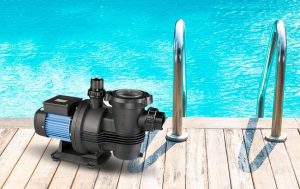

As a pool owner, few things can be more frustrating than a pool pump that refuses to cooperate. A properly functioning pool pump is the heart of your pool system, responsible for circulating water and keeping it clean and inviting. However, if your pump fails to prime correctly, it can lead to a host of problems, including reduced water flow, inefficient filtration, and even potential damage to the pump itself. Don’t worry, fellow pool enthusiasts! In this comprehensive guide, we’ll walk you through the process of priming your pool pump, empowering you to tackle this crucial task with confidence and ease.
Table of Contents
Priming a pool pump is not just a trivial task; it’s an essential step in ensuring the longevity and efficient operation of your pool system. A properly primed pump creates a continuous flow of water, preventing air pockets from forming and minimising the risk of cavitation, a phenomenon that can cause severe damage to the pump’s internal components.
Before you dive into priming your pool pump, it’s crucial to gather the necessary tools and materials. You’ll need a bucket or hose to fill the pump basket with water, a pool vacuum or manual vacuum tool to release any trapped air, and a set of pliers to tighten or loosen any necessary connections. Additionally, ensure that your pool filter is clean and backwashed, as a clogged filter can impede the priming process.
Now that you’ve assembled your tools and prepared your pool system, it’s time to roll up your sleeves and get priming! Follow these simple steps:
In some cases, air pockets may persist, preventing the pump from priming correctly. Don’t panic! You can try this:
Congratulations! You’ve successfully primed your pool pump. But the work doesn’t stop there. Proper maintenance is key to ensuring your pump remains primed and operates at peak efficiency. Here are some tips:
While priming a pool pump is a task that most pool owners can handle, there may be instances when you need to seek professional assistance. If you’ve tried all the recommended techniques and your pump still won’t prime, or if you notice any unusual noises or leaks, it’s best to consult a qualified pool technician. They have the expertise and tools to diagnose and resolve more complex issues, ensuring the safety and longevity of your pool system.
Mastering the art of priming your pool pump is a valuable skill that every pool owner should possess. By following the steps outlined in this guide, you’ll not only save yourself from the frustration of a non-functioning pump but also extend the lifespan of your pool system and potentially save thousands of dollars in repair costs. Remember, a well-primed pool pump in Australia is the key to enjoying a sparkling, inviting pool all season long.
So, grab your tools, roll up your sleeves, and take pride in being a pool maintenance pro!
Mother's Day is the day to celebrate the amazing mothers who raised us and took…
Soap nails have been the most trending manicure style of 2025, and it has thrilled…
Ah, prom season—the one marked by sparkling gowns, immaculate tuxes, lifelong memories. But one major…
Acne can be one of the most infuriating skin issues to work with. Whether it's…
The second weekend of Coachella 2025 was a full-fledged fashion extravaganza, with celebrities descending upon…
In a very sad moment for the world and for the Catholic Church, Pope Francis…